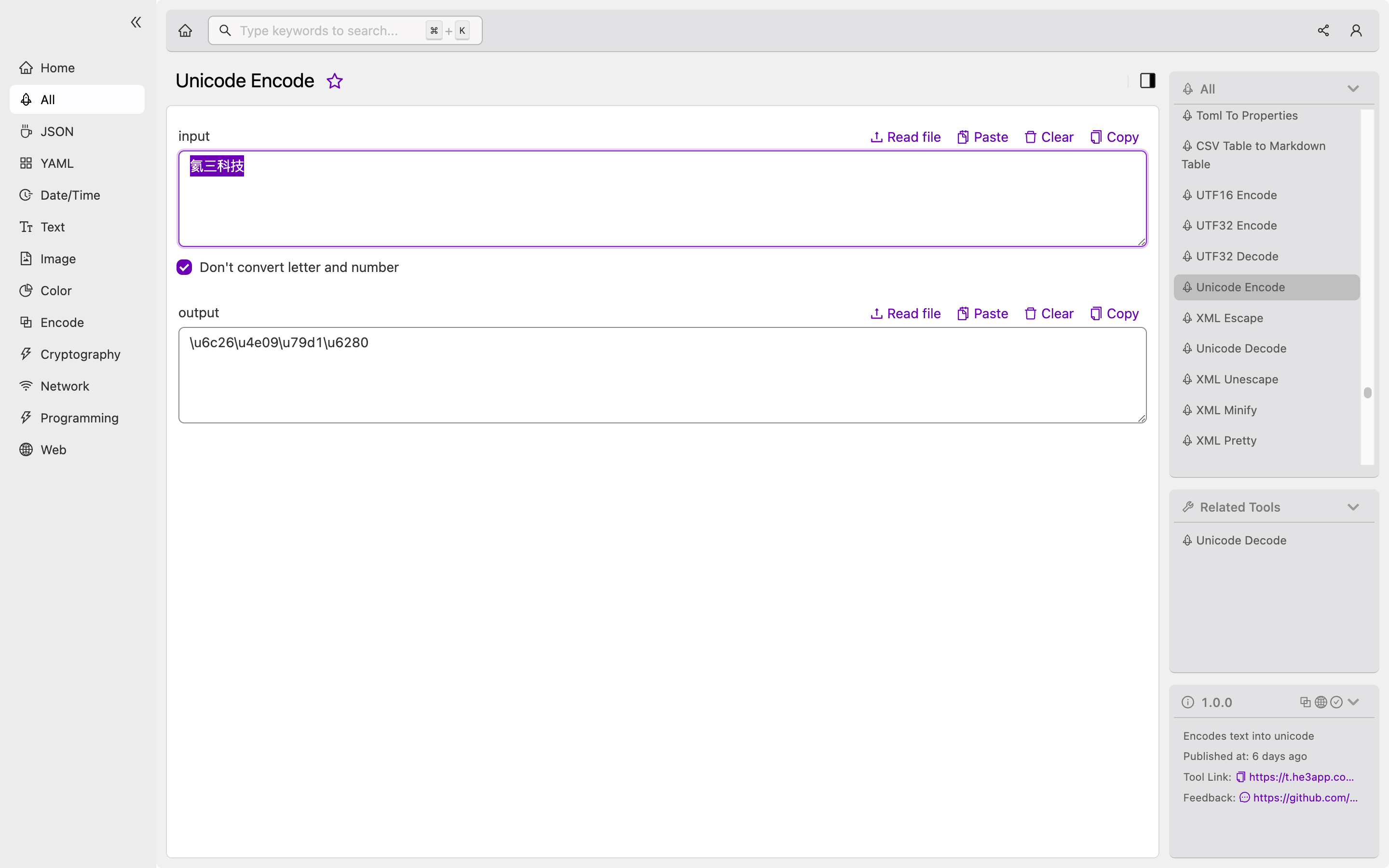Understanding Unicode Encode for Developers
When it comes to encoding text, Unicode is one of the most widely used standards. Unicode Encode refers to the process of converting a string of characters into a sequence of bytes to facilitate data storage and transmission. In this article, we will dive deeper into the concept of Unicode Encode, its working, key features, and misconceptions.
How Unicode Encode Works
Unicode Encode works by utilizing a standard encoding scheme to translate a string of characters into bytes. The most commonly used Unicode encoding standard is the UTF-8 encoding scheme, which can encode any character in the Unicode standard. The UTF-8 code unit can range from 1 to 4 bytes, depending on the character being encoded.
To perform Unicode Encode, you can use built-in functions provided by programming languages, such as Python’s encode() method. Or, you can use Unicode Encode tool in He3 Toolbox (https://t.he3app.com?qb5e ) easily.
# Python example
string = "Hello world"
bytes_string = string.encode('UTF-8')
print(bytes_string)This will output the bytes representation of the “Hello world” string in UTF-8 encoding:
b'Hello world'Scenarios of Using Unicode Encode
Unicode Encode is commonly used in various scenarios where it is necessary to transmit and store textual data. Some of these scenarios include:
- Web page content encoding
- Email content encoding
- File name encoding
- Database encoding
Key Features of Unicode Encode
Here are some key features of Unicode Encode:
| Feature | Description |
|---|---|
| Standardization | Unicode Encode uses a standard encoding scheme to ensure interoperability across different systems. |
| Support for Multiple Languages | Unicode Encode supports encoding of any character in the Unicode standard, covering a wide range of languages and writing systems. |
| Efficient Storage | Unicode Encode uses variable-length encoding to optimize storage, resulting in smaller file sizes. |
Misconceptions and FAQs
Misconception: Unicode Encode only supports English characters.
Unicode Encode supports encoding of any character in the Unicode standard, covering a wide range of languages and writing systems.
FAQ 1: What is the difference between Unicode Encode and UTF-8?
UTF-8 is a specific encoding scheme that uses the Unicode standard to represent characters. Unicode Encode, on the other hand, is a more general term that refers to the process of encoding textual data using a standard encoding scheme.
FAQ 2: Is Unicode Encode necessary for all textual data?
Unicode Encode is necessary when dealing with non-ASCII characters, such as those used in languages other than English, mathematical symbols, etc. ASCII text can be stored and transmitted without the need for Unicode Encode.
Conclusion
Unicode Encode is an essential concept for developers who deal with textual data. It helps ensure interoperability between different systems by using a standard encoding scheme and supports encoding of any character in the Unicode standard. By understanding how Unicode Encode works and its key features, developers can make well-informed decisions when encoding textual data for storage and transmission.

